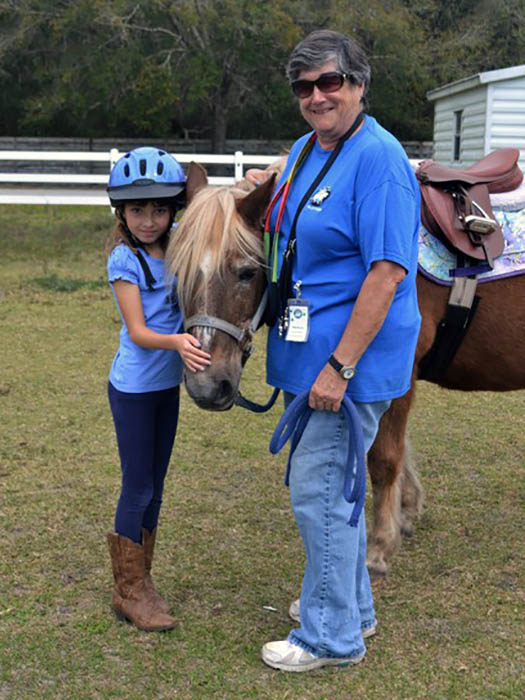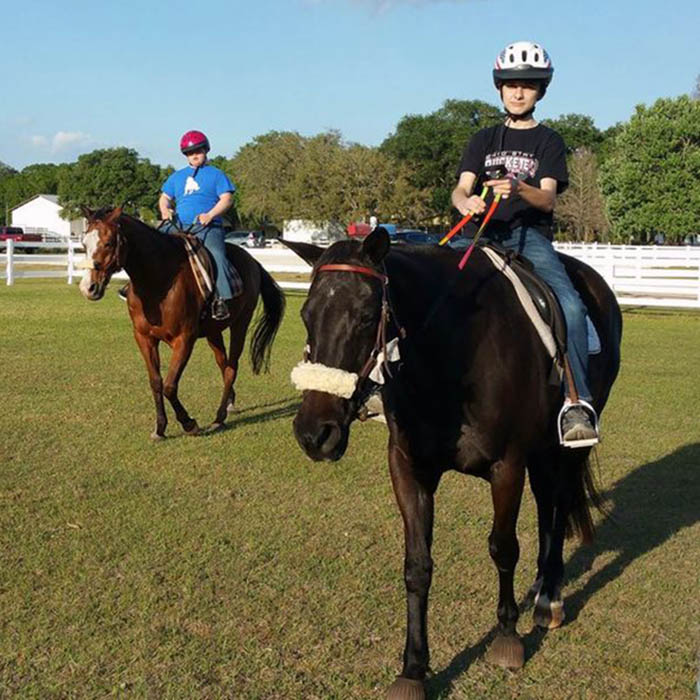Participant Eligibility Requirements
Essential Considerations
Our primary concern is to provide a safe, productive experience for all riders. Included in this is the wish to “do no harm.” Recognizing that horse-related activities do hold inherent risks, we need to assess rider participation with a “Risk/Benefit” analysis. The essential question for all participants is, “Will the benefit of the therapeutic riding activity outweigh the risk?” This question must be answered with consensus by the entire therapeutic riding team: participant, parent/guardian, instructor, program manager, and physician. All individuals must be comfortable with the decision to ride or not to ride, by being familiar with all pertinent information.
- Therapeutic riding inherently involves movement. If the movement activity will cause a decrease in the participant’s function, an increase in pain or generally aggravate the medical condition, therapeutic riding may not be the activity of choice.
- The essence of therapeutic riding is the human-animal connection. If this interaction is detrimental to the rider or the horse, equine activities may be contraindicated.
- Therapeutic riding requires the use of certain equipment in a prescribed environment and is, by definition, interaction with a horse. If the therapeutic riding program cannot accommodate the participant’s equipment needs, or the environment will aggravate his/her condition, riding may not be the activity of choice.
- Mounted riding activities always present the potential for a fall. In most instances, the fall would be from four to six feet above the ground. Such a fall may cause a greater functional impairment than the participant originally had. The possibility of a fall should be given careful consideration, and may lead to the informed decision that therapeutic riding is not the activity of choice.
- Working around horses involves risk. The safety of the participant, volunteers, staff and horses are of the utmost importance and each will be taken into consideration when accepting new participants.

Participants must be at least 4 years of age to participate in the Therapeutic Riding program. Individuals that qualify for
- Participants must have a signed release by a physician and complete all required liability and information forms.
- Individuals with Atlantoaxial Instability are ineligible to ride.
- Due to the weight and height carrying limits of our therapy horses as well as the availability and limitations of our volunteers, there are some individual weight restrictions. This rule is needed in order to provide for the safety of the rider, volunteers and staff as well as to protect the health and soundness of the horses.
- Due to the limitations of our staff, individuals that require back riding are ineligible to ride.
- Due to the limitations of our staff and volunteers, individuals that are aggressive toward people or animals and/or are unable to be controlled through their behavioral outbursts are ineligible to ride.
- All riders must be able to wear an approved riding helmet, long pants and closed-toe, hard-soled shoes with heels.
- All participants and their parents/guardians must be willing to abide by all rules established and posted.
SMART reserves the right to periodically review and reassess a participant’s progress and eligibility in the program.
To apply to be a SMART rider, please print out the application form (link below), complete it and return to SMART. We do not accept digital submissions at this time.


